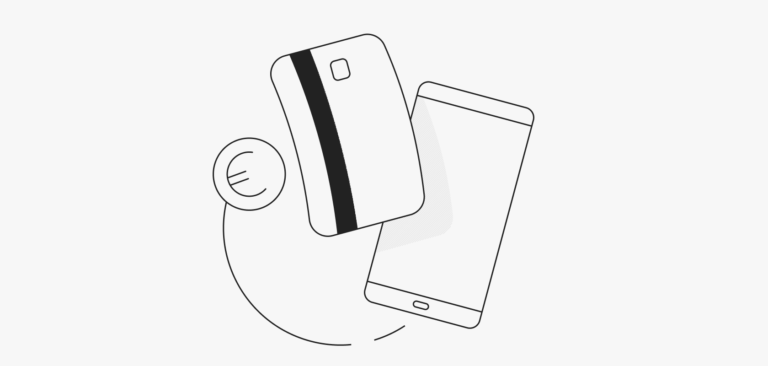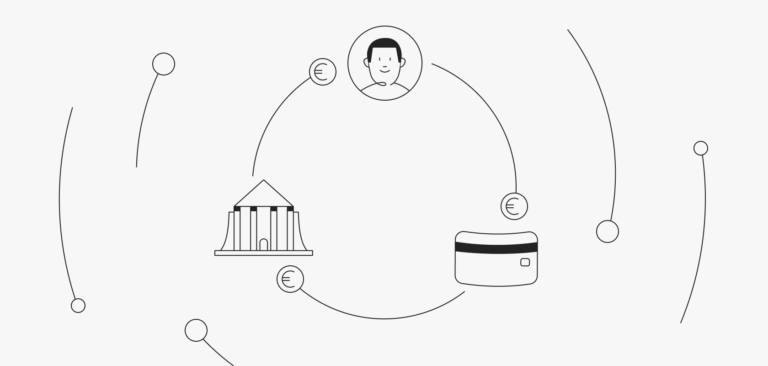Declined card payments can cost a business money and customers. It’s estimated that more than $145 billion worth of online purchases are declined each year due to various reasons, including expired cards or suspected fraud. Even genuine transactions can sometimes be mistaken for fraud and declined.
This is understandably frustrating for customers whose purchase has been interrupted, but it also affects merchants – particularly when some research shows that more than half of customers who experience payment failures won’t return to the website to try again. This not only leads to lost revenue for the business, but also marketing costs to recreate the sales opportunity and administrative costs that come with chasing up declined payments.
The best thing you can do as a merchant is to be proactive in preventing instances of declined payments. In this article, we look at 6 reasons why card payments are declined and what you can do as a merchant to reduce these occurrences.
What does it mean when a card is declined?
A credit card decline happens when a transaction has been refused by the card issuer or payment processing system. This might happen for several reasons, like when a customer uses an expired card, inputs the incorrect card details, or has insufficient funds. It can also happen if credit card companies suspect fraudulent activity, the account has been frozen, or the merchant’s payment system is experiencing technical issues.
Declined payments can cost businesses money and customers. To improve your payment success rate, it helps to understand what are the most common reasons for credit card declines and the steps you can take to reduce them.
Types of credit card declines
Credit card declines can be categorized into two types: soft declines and hard declines. We look at each of these below.
- Soft decline: With a soft decline, the credit card issuer approves the purchase amount but an error occurs in another part of the transaction. These are temporary issues that can be resolved by retrying the transaction or taking minor corrective actions. Soft declines might happen due to network or technical issues or a customer inputting incorrect information.
- Hard decline: These happen when a customer’s bank rejects the credit card payment. Unlike soft declines, the transaction cannot be retried unless the customer uses an alternative payment method. Hard declines might occur due to a customer using an expired card or a card that’s been reported as lost or stolen, having low available credit, trying to access a closed account, or potential fraud.
Credit card decline codes
Credit card decline codes are provided by card issuers to indicate the specific reason why a payment was declined. Below are the most common credit card decline codes and what they mean.
- Code 05 – Do not honor: This means the card issuer has declined the transaction without providing a specific reason. The cardholder should contact their bank for more information.
- Code 14/15 – Incorrect card number: This means the customer has entered an invalid card number and should try to re-enter it again.
- Code 41 – Lost card, pick up: This means the card has been reported lost and all transactions have been frozen to prevent fraudulent transactions.
- Code 43 – Stolen card, pick up: This means the card has been reported stolen and all transactions have been frozen to prevent fraudulent transactions.
- Code 51 – Insufficient funds: This means the cardholder doesn’t have enough available credit to cover the transaction amount. They should check their balance or use a different payment method.
- Code 54 – Expired card: This means the card’s expiration date has passed. The cardholder needs to use a different card or request a new one from their issuer.
- Code 57 – Transaction not permitted: This means the transaction type is not allowed, usually if the cardholder has blocked international payments or online transactions.
- Code 63 – Wrong CVC: This means the customer has entered the incorrect card verification code (CVC) and should try again.
- Code 65 – Credit limit exceeded: This means the transaction amount exceeds the cardholder’s credit limit. They may need to clear their balance, request a credit line increase, or use a different card.
6 reasons why card payments are declined
Knowing the reasons why card payments are declined can help you take preventative measures to reduce their occurrence. Below, we look at 6 reasons for card declines and what you can do to resolve them.
1. Insufficient funds
One of the most common reasons for a payment decline is when the customer doesn’t have enough funds in their bank account to cover the transaction, or they’ve reached their credit limit. While there’s little you can do as a merchant to prevent a customer from overspending, there are some steps you can take to offer them options when this decline occurs.
Here’s what you can do:
- Send failed payment notifications: The faster you let a customer know that their credit card declined, the more likely they’ll be to retry the transaction. Failed payment notifications can get to customers while they’re still in purchasing mode and encourage them to add more funds to their account to complete the transaction.
- Provide alternative payment options: One way customers can proceed with a transaction without enough funds is to use a Buy Now Pay Later (BNPL) option, where they can spread the cost of the credit card purchase over a number of smaller payments.
2. Customer identity cannot be verified
Transactions can be declined if the cardholder’s identity cannot be verified. This is usually a good thing, as it prevents fraudulent activity. However, customer authentication processes can sometimes generate false positives. This means that the system doesn’t recognize a genuine payer and fails to verify a customer’s identity.
Here’s what you can do:
- 3D Secure 2.0: This advanced protocol allows for the exchange of more than 100 data points between the merchant and card issuer to reduce unnecessary declines and enhance the accuracy of fraud detection.
- One-time passwords (OTP): Providing unique one-time passwords can enhance the customer verification process and reduce instances where a system doesn’t recognize a genuine customer’s identity.
3. Fraud alerts
Card issuers often decline transactions as a measure against fraud. This usually involves suspicious activity, such as unusual spending patterns, bulk purchasing, or making an online payment from an unfamiliar device. Because the credit card company carries the risk of fraud, it tends to be overcautious and can produce false declines.
Here’s what you can do:
- Improve payment acceptance: Bank fraud algorithms typically look at two factors when assessing the probability of a fraudulent transaction: transaction volume and percentage of successful payments. One thing merchants can do to reduce fraud triggers is improve payment acceptance rates while also increasing transaction volumes through sales & marketing efforts.
- Balance transaction volumes & success rates: In some cases, it may be worthwhile for merchants to focus on generating fewer transactions with a higher success rate for a short period of time. This can help reduce the amount of fraud triggers.
- Analyze payment data: A payment service provider that offers detailed payment data can help merchants identify which issuers are declining payments most often. They can then reach out to those credit card issuers to pinpoint the reasons behind the declines and resolve the underlying issues.
4. Canceled or expired cards
A common issue with recurring payments is having transactions declined due to cards being canceled or expired. This tends to happen when a customer inputs their card details for the first transaction and then gives the merchant permission to charge automatic payments on the same card. In many cases, customers will forget to update their payment details when a card has expired or been canceled.
Here’s what you can do:
- Send reminders: You can implement automatic reminders for customers to update their card details before the expiration date.
- Use tokenization: Tokenization replaces customers’ card information with a unique digital identifier called a token. This token remains associated with customers’ credit card accounts even when their physical card is canceled or expired, ensuring that recurring payments are valid even if the original card is no longer used.
5. Downtime & maintenance
Online payment processors should be operational for 24 hours a day, however they might occasionally experience downtime or undergo maintenance that temporarily halts transactions. While this is a relatively rare occurrence, it can happen and be a cause for declined transactions.
Here’s what you can do:
- Provide alternative payment methods: Offering your customers more than one payment method can help them complete transactions even if one payment processor is down.
6. Incorrect payment information
A common reason for card payments being declined is that the cardholder has supplied incorrect payment details that don’t match the information the bank has on file. This could be due to a simple typo or attempted fraud. Incorrect information might include the wrong address, wrong card number, or incorrect expiry date.
Here’s what you can do:
- Implement user-friendly checkouts: An intuitive, user-friendly checkout process can minimize errors and real-time validation alerts customers as soon as incorrect information has been inputted.
- Use an Address Verification Service (AVS): AVS helps merchants authenticate online customers by comparing the address they submit with the one the issuing bank has on file. This can help prevent fraudulent transactions, although it’s best to use AVS with a more holistic anti-fraud strategy as it may lead to false positives or negatives.
How merchants can prevent credit card declines
If you want to minimize credit card declines and improve payment success rates, here are some best practices you can follow:
- Network tokenization: This replaces sensitive card data with unique tokens that can make transactions more secure while also preventing declines due to expired or canceled cards. To do this, choose a payment gateway that offers network tokenization as part of their infrastructure.
- 3D Secure: This adds an extra layer of authentication to online transactions by requiring customers to verify their identity through a one-time password (OTP) or biometric authentication. Integrate 3D Secure protocols into your checkout process to improve security and reduce declined card payments due to fraudulent transactions.
- Failed payment notifications: This immediately notifies customers when their card payment has been declined, allowing them to quickly update their information or choose an alternative payment method. Set up automated email or SMS notifications to notify customers when transactions have been declined and encourage them to try again.
- Address Verification Service (AVS): This helps verify a cardholder’s identity by comparing the billing address they provide with that on file with the card issuer. Enable AVS as part of your payment gateway settings to automatically verify billing addresses and prevent declines due to incorrect information.
- Alternative payment options: This reduces payment declines by offering customers a variety of payment options, such as digital wallets, virtual cards, bank transfers, PayPal, or Buy Now Pay Later (BNPL).
Use ZEN to reduce declined card payments
You can only do so much as a merchant to prevent declined transactions. To take real preventative measures, you need to choose a Payment Service Provider (PSP) that has all the tools and infrastructure to address and prevent declined payments.
With ZEN, you can access a whole host of tools to reduce credit card declines, including instant error messages, saved card details for faster checkouts, more than 20 payment methods, advanced verification & fraud detection tools, and international transaction support. This is in addition to our seamless, user-friendly checkout experience, instant payment settlement, and lowest processing fees on the market. Reduce card payment declines and cart abandonment and increase sales with our state-of-the-art, comprehensive ecommerce solution.
Open your ZEN account now to find out why we’re the best payment partner on the market.



